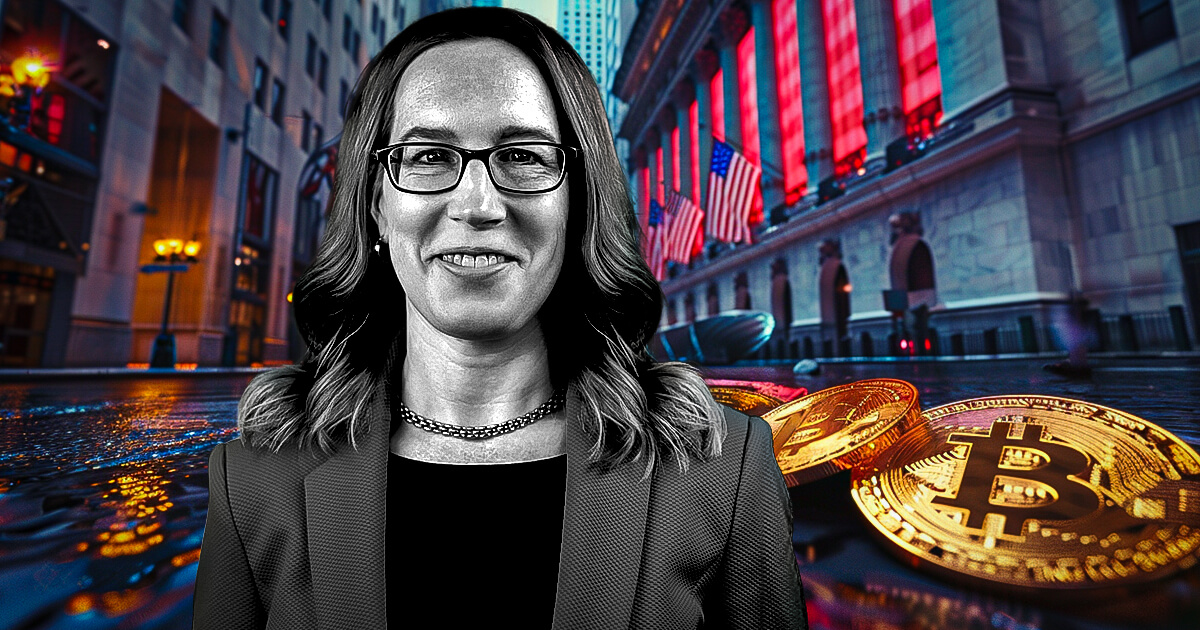By Amy Castor and David Gerard
The slow-motion multi-track train crash
A year ago this weekend, stablecoin TerraUSD collapsed — and finally popped the 2021–22 crypto bubble.
TerraUSD, otherwise known as UST, was an algorithmic stablecoin stabilized by trade in Luna — and Luna was free-floating. You bought UST so you could stake it in Terraform Labs’ Anchor Protocol and get 20% interest, paid in more UST. Now, you might call that a Ponzi scheme.
UST was supposed to be worth a dollar, but neither UST nor Luna had any basis for their value. Neither market had any depth. The use case for UST was to buy into Anchor. People warned that Terra-Luna was ridiculously unstable nonsense for six months. [Wake Forest Law Review]
But the crypto gamblers didn’t care. Number was going up, and the crypto bubble kept inflating! Until it didn’t.
Some traders — nobody’s quite sure who, but quite possibly both Sam Bankman-Fried’s Alameda and Terraform Labs themselves — noticed that they could make a few hundred million imaginary dollars by crashing UST. So they did.
It turned out that a huge number of crypto companies had put everything they had into Anchor — because it paid the highest available interest. When UST collapsed, these companies suddenly had gaping holes in their accounts.
Other crypto companies, who had put their cryptos into those companies, were suddenly taken out in turn. UST took out Three Arrows Capital (3AC). UST and 3AC took out Celsius Network. 3AC took out Voyager Digital, BlockFi, and many other smaller funds.
It was around this time that we posted our hugely popular latecomer’s guide to crypto crashing. Available in five languages!
Bankman-Fried swooped in to save the market with FTX’s seemingly bottomless pit of money! Unfortunately, it turned out that Alameda, the sister company to FTX, had been wiped out by UST and 3AC in May — but hadn’t told anyone. FTX finally blew up in November. The subsequent arrest of SBF and his colleagues made international news — but it was just the May collapse continuing to play out.
The problem with crypto companies, like FTX, was that they were accounting for their reserves mark-to-market. You take the price of your made-up token, multiply it by how many you have, and put that in your accounts with a dollar sign in front. Never mind that you hold more of the token that anyone would ever buy, and can control the price.
Mark-to-market is a perfectly normal accounting method. But in crypto, it fails to account for the fact that these tokens were largely illiquid trash. In the case of FTX, its “reserve” included alleged billions of dollars’ worth of its own internal FTT tokens.
Crypto companies frantically shuffled around their “billions” in illiquid tokens, pretending these could be treated as being worth that much money.
When UST crashed in May, bitcoin’s price crashed along with it. But more importantly, bitcoin’s volume crashed.
Ordinary retail investors — the source of every actual dollar in crypto — were scared off by the crash of UST in May. A lot of people who got into crypto hoping to find a way out of dire economic circumstances suddenly discovered they were back underwater, in worse shape than before
Actual-money crypto exchanges, such as Coinbase, Gemini, and Crypto.com, announced sudden swingeing layoffs. We were pretty sure they saw trading volumes plummet and panicked because they make their money on trades. They knew the party was over, too.
We now know from Coinbase’s SEC filings that this was the case. Retail just got up and left, and stopped pouring their actual dollars into the crypto get-rich scheme.
Crypto exchanges don’t release precise volumes of actual dollars coming in. But OpenSea admitted that a full 99% of NFT trading had just vanished. It turns out the NFT market was just crypto speculators.
Here in mid-2023, the retail dollars still aren’t coming into crypto — so the realizable value of the “billions” in crypto is much smaller. All the exchanges and crypto hedge funds are still time bombs, sitting on “assets” that they know their stated valuations of are imaginary.
After FTX imploded, US authorities came down hard on crypto — it must behave, or it’s out. Crypto is now synonymous with fraud. Claims that regulations quash “innovation” no longer have a leg to stand on.
Letitia James is coming for crypto
The New York attorney general is proposing a landmark bill that will give her office broad authority to police crypto. Letitia James will submit her proposal, dubbed the Crypto Regulation, Protection, Transparency, and Oversight Act, or CRPTO, to state lawmakers for the 2023 legislative session, which runs through June 8. [Twitter; Press release; Bill, PDF]
If it passes into law, CRPTO will:
- Require crypto companies to reimburse customers who are defrauded, as banks do now;
- Give the NYAG the power to enforce these laws and shut down companies that violate them;
- Force independent and public auditing of crypto companies;
- Restrict conflicts of interest so that individuals who issue tokens cannot also own the crypto platforms where the tokens trade;
- Stop crypto companies from borrowing or lending investors’ assets;
- Provide investors with risk and conflict-of-interest information about crypto companies.
This is all normal and reasonable for finance — unless your only actual use case is evading regulations.
Coinbase goes offshore
Coinbase has opened an international exchange — basically, an offshore, unregulated casino — for trading ETH and BTC perpetual futures contracts settled in USCD with up to 5x leverage. The move follows Coinbase getting its license from the Bermuda Monetary Authority. Trading is via API, as there’s no full-fledged app or website yet. The service is only open to non-US institutions. [Coinbase, archive]
On the same day, May 2, Gemini also launched a non-US derivatives platform to serve 30 countries and territories, including Singapore, Hong Kong, Brazil, and the Philippines. [Fortune]
As we saw in the CFTC prosecution of Binance, US crypto hedge funds make their money from ill-regulated offshore derivatives, and the offshore derivative exchanges make their money from the US. The companies are sure to set up some way to get their US-originated money into these exchanges — a sufficiently complex array of shell companies or something. How much trouble the exchanges get into is a question for the CFTC.
Binance and the Russians
The US Department of Justice is investigating whether Binance allowed Russians to skirt US sanctions related to Ukraine. [Bloomberg]
Binance is already dealing with multiple criminal and regulatory investigations — most notably the CFTC suit, which included allegations of money laundering. According to the CFTC, Binance’s chief compliance officer advised customers using Russian darknet markets like Hydra to “be careful with flow of funds” and told them to come back with a new account instead of blocking their access to the exchange.
Vauld takes down CoinLoan
Estonian crypto lending platform CoinLoan abruptly halted all service on April 25, after local authorities told it to cease operations. The exchange has been showing signs of insolvency since July 2022, when it began limited withdrawals to $5,000 per day. [CoinLoan, 2022, archive; Notification of injunction, in Estonian]
Darshan Bathija, the CEO of Vauld — a crypto lender and exchange mostly operating in India — had a bunch of customer crypto stored at CoinLoan in a personal account. Vauld was another domino knocked over by putting their customers’ funds into Terra-Luna and 3AC. When CoinLoan began limiting withdrawals in June, Bathija couldn’t get his money out, so he filed a lawsuit in Estonia, which led to Estonia shutting CoinLoan down. [Protos]
Bit4You, a Belgian crypto lending platform, also had funds on CoinLoan. Bit4You also now faces uncertainty as it suspended all activities on April 26 after announcing that CoinLoan was a “major service provider.” [Bit4You, in French]
Unbanking the unbankable in Africa
The Central African Republic adopted bitcoin as legal tender in April 2022, using a translated version of El Salvador’s Bitcoin Law.
This didn’t turn out to herald a new wave of countries adopting crypto.
CAR is the second-poorest country in the world, internet penetration is just 11%, and it’s incredibly corrupt. The CAR bitcoin law was clearly a scam — the only question was the precise nature of the scam. David spoke to the press about it at the time. [African Business, 2022]
The purpose of the law appeared to involve an inchoate scheme for a bitcoin charter city and a coin called Sango, which would tokenize CAR’s considerable natural resources. [The Block, 2022; The Block, 2022; RFI, 2022, in French; RFI, 2022, in French; Sango presentation, PDF, archive]
CAR also gets funding and military support from Russia — a country which would be very happy to have somewhere to cash out bitcoins into more acceptable forms of currency.
One of the promoters, Émile Parfait Simb, has an entry on French Wikipedia for his notability in the field of scamming. Simb had been arrested earlier in 2022 for running the Liyeplimal crypto Ponzi scheme in Cameroon. He skipped to CAR, who gave him a diplomatic passport that he used to go to Russia. [Business In Cameroon, 2022; Behind MLM, 2022]
A year later, at the request of the International Monetary Fund, CAR is dropping the laws requiring the acceptance of bitcoin as legal tender and free convertibility. Evidently, things didn’t work out well enough with the Ponzi scammer and his friends. [Central Banking, paywalled; IMF]
Actual good news for FTX creditors
FTX wants to claw back billions of dollars from bankrupt Genesis Global Capital. They allege that Genesis got its money out of FTX ahead of other creditors, just before both companies fell into bankruptcy.
FTX also claims that Genesis, a subsidiary of Barry Silbert’s Digital Currency Group, was “one of the main feeder funds to FTX and instrumental to its fraudulent business model.” Genesis loaned Alameda as much as $8 billion in 2021: [Doc 289, PDF; WSJ, paywalled]
The business model of GGC was to gather cryptocurrency from various lenders, pass those loans through to Alameda and other borrowers, and receive a profit in the form of a net interest margin.
In other news, FTX has court approval to sell the LedgerX derivatives exchange to an affiliate of Miami International Holdings for $50 million. FTX bought LedgerX for nearly six times that amount two years ago. [Order, PDF]
More good news for bitcoin
South Korea is vying with the US to extradite Do Kwon, the former co-founder of Terraform Labs — who set all of this off. Kwon is currently detained in Montenegro. If found guilty in South Korea, Kwon could spend more than 40 years in jail, a South Korean prosecutor said. [WSJ, paywalled]
Bitcoin is currently hovering around $29,000. As we’ve been saying, the secret ingredient is thin trading — the retail actual dollars have gone home. The bitcoin price rise is largely faked, and the volume doesn’t exist. [FT, archive]
OPNX, the bankruptcy exchange set up by the founders of the failed 3AC and CoinFLEX, who are now all in Dubai, has been reprimanded by Dubai’s Virtual Asset Regulatory Authority. OPNX had been operating an unregulated exchange and promoting its FLEX token without the proper permits. VARA says it’s keeping an eye on the situation. [CoinDesk; VARA]
OKX, formerly OKEx, has suddenly and drastically limited withdrawals for users who haven’t completed KYC. This is often a red flag for insolvency. But it might all be fine! [Reddit; Reddit]
Argentina’s central bank has banned payment apps from offering crypto to customers. [BCRA, in Spanish]
NFTs show up in the collapse! Sotheby’s, upset to see the free NFT money disappear, is setting up its own new secondary market for NFTs. This comes a month after Sotheby’s was picked to sell off the significant NFT holdings of Three Arrows Capital — including our old friend CryptoDickButt #1462. [FT, paywalled]

Credit: Source link















































